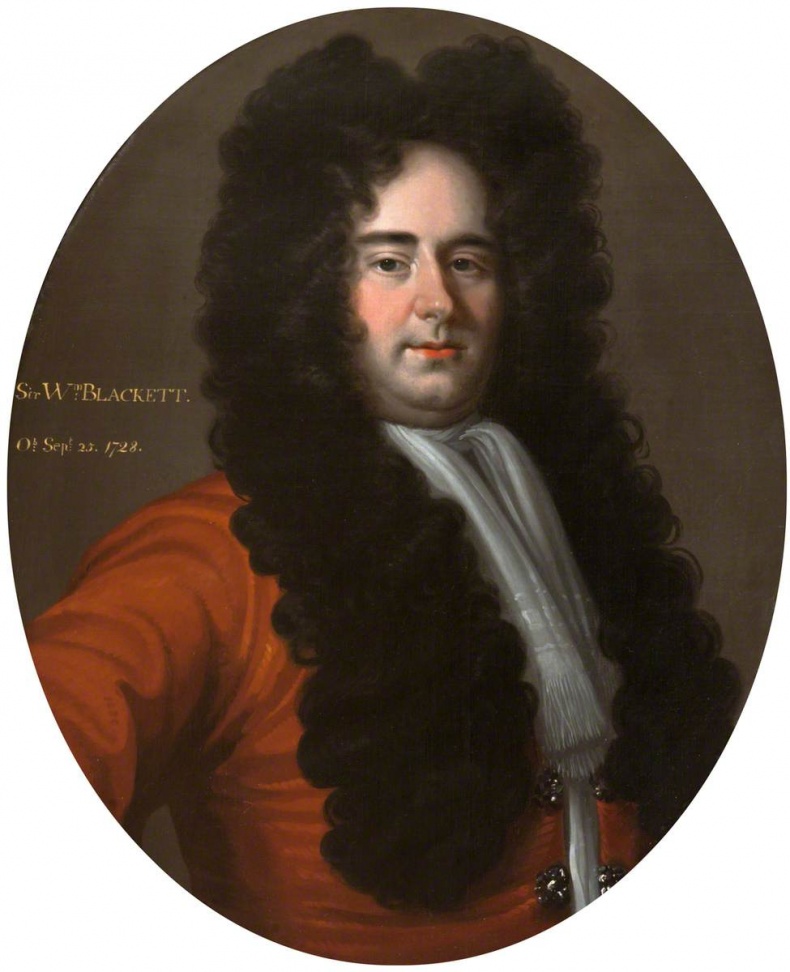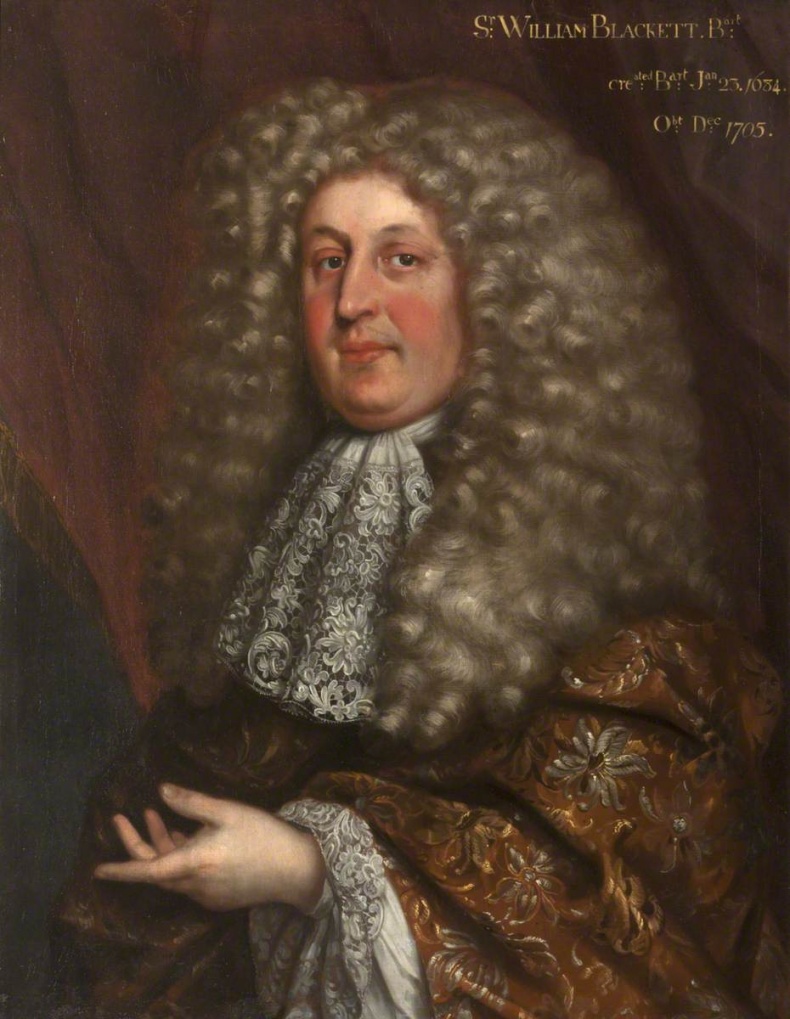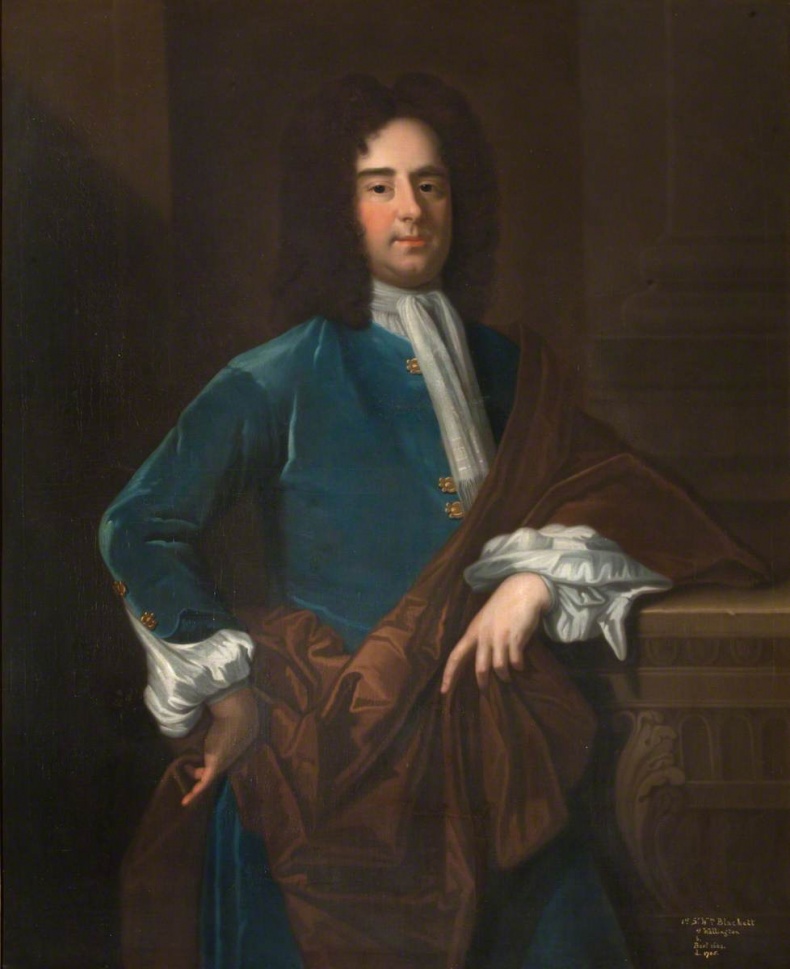


Blackett, Sir William and Blackett, Sir William
1657-1705 and 1690-1728
Merchant
William Blackett II was born in 1657 as the 3rd surviving son of his eminent father, Sir William Blackett I (1621-1680). His father had achieved the remarkable task of establishing a business and navigating the tumultuous political landscape of the English Civil war. When he died in 1680 it was recorded that to his eldest son, Edward (1649-1718), he gave his title and his wealth but to his favourite son William, he endowed his political and business genius. William inherited his father’s mines, Greyfriars mansion on Pilgrim Street, but perhaps more importantly, he also inherited his drive for success in commerce.
At the age of 22, he was made Freeman of the Newcastle Merchant Adventurers, at 26 he was elected mayor of Newcastle, and by 28 he had been elected Governor of the Hostmen [a cartel of businessmen who formed a monopoly to control the export of coal from the River Tyne]. These were the most vital political positions for the control of trade in the region. By 1687 William had also been elected, without contest, to be Newcastle’s MP. This was a sign of the town’s confidence in William or, perhaps, his burgeoning control over the town’s social and political institutions.
Meanwhile, William had been expanding his father’s business through the purchases lands owned by the ancient but struggling Fenwick family. These included the Manor of Hexham and Wallington. By owning these lands William had greater freedom and permanence to exploit mineral rights. Combined with an agreement with the Bishop of Durham to administer episcopal lead mines in Weardale, Blackett’s wealth continued to grow.
William was a respected and popular figure in Newcastle by both rich and poor. Though he had purchased Wallington Hall and had spent money establishing it as a family seat, he had preferred to live and work in Newcastle from Greyfriars Mansion. In London he was known as Blackett ‘of Wallington’ but William always referred to himself as William ‘of Newcastle’.
When he died in London in 1705 he was returned to Newcastle and buried at St. Nicholas Church. In his will, he left £1,000 which was to be invested with the income being divided in three. The first third was to fund a school in Newcastle to teach reading. The second third was to be used to fund seven-year apprenticeships in the city. The final third was to be used to alleviate poverty in the parish of St. Andrews.
The Sir William Blackett Charity still maintains a presence in Newcastle today. Supported by the income of its historic investments, the charity has assets in excess of £3 million. These investments provide an income of over £200,000 per annum which is reinvested back into St. Andrews church community. A recent development has been supporting the growth of the Northumbria Deaf Mission. This provides space and training for the Deaf community in Newcastle. The charity also maintains a property portfolio in Newcastle and helps maintain the diverse aesthetic of Northumberland Street, for example.
Blackett, Sir William (1690-1728)
While his father received a baronetcy in his own name, just like his grandfather before him, the younger William Blackett was able to directly inherit all of his father’s estate and businesses. Sir William III even managed to follow his father into the House of Commons, though not without contest.
The grandson does not seem to have had the same political and business metal as the preceding Williams. His popularity declined throughout his life. He was suspected of being a Jacobite despite no direct involvement with the movement and he was never able to exceed his father’s successes. He died at the age of 38 leaving everything to his illegitimate daughter.
William III did leave one lasting contribution to the city. As MP to the town, he secured a Bill in parliament which established the Keelmen’s Hospital.
The hospital, which still stands vigilantly above Sandgate today, is a beautiful building built upon a beautiful vision. The hospital was a focal point for the Keelmen, a brightly dressed boisterous community of coal bargemen. Keelmen would pay into a central fund, which was supplemented by subscriptions, which provided pensions for widows, injury pay and accommodation for the elderly and medical assistance.
References
Blackett-Ord, M. (2004). Blackett, Sir William, first baronet. Available at: http://www.oxforddnb.com/view/10.1093/ref:odnb/9780198614128.001.0001/odnb-9780198614128-e-66521?rskey=4fLb3e&result=6 (Accessed: 20/06/2018).
Charity of Sir William Blackett the Younger financial returns. (2016). Available at the Charity Commission: http://beta.charitycommission.gov.uk/charity-details/?regid=244047&subid=0 (Accessed: 20/06/2018).
Lomas, R. (2009). An encyclopaedia of North-East England, Edinburgh: Birlinn Ltd, pp. 245, 457.
Welford, R. (1888). Men of Mark twixt Tyne and tweed: Chronicle of North-country lore and legend. Newcastle: Newcastle upon Tyne Jubilee Exhibition, pp. 442-444.